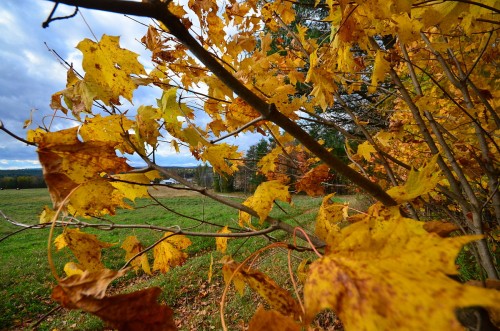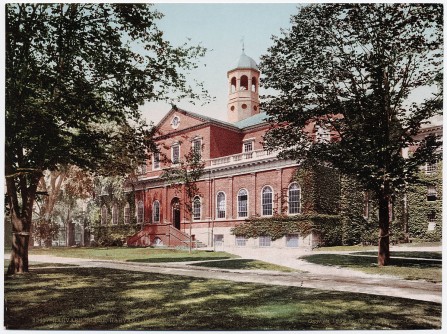Snow days may be a thing of the past as “work from home” and “virtual learning” become more common across the country.
This article was originally published in 2015, but with widespread work from home practices at businesses across the country—and schools preemptively canceling snow days for virtual learning—its insights are perhaps more salient today.
Toll the death knell, for the “snow day” has melted away.
Over this past week, the northeast experienced yet another string of snowstorms. Down in Washington, DC, meager snow accumulation shut down the federal government faster than congressional dysfunction. Four hundred miles north, snowmobiles substituted Saddlebreds along Revere’s route hollering this season’s repeated refrain: “The blizzard is coming; the blizzard is coming.”
With this snowfall, children up and down the East Coast enjoyed their fair share of postponed lessons and cancelled classes. Yet, although the desks were vacant, very few students actually delighted in the quintessential snow day to which many of us are accustomed.
The snowy vacation day. Growing up, walking to the big snowy hill with my sled, my sister, and my dad was the best part of every snow day. Then, after a long afternoon at the park, we would return home to enjoy a tall cup of Mom’s delicious hot chocolate (with marshmallows, of course). Having this time with family made these wintry occasions truly special.
Yet, today the “adult snow day” is no more. Snow on the roads simply means working from home. As New York Magazine points out, “a day that would in 1995 have been spent watching the snow pile up against the windowsills, hanging out with the kids, or vegging out with daytime TV was instead spent hunched over a laptop.” The family’s leisure thus gives way to the maxim, “one does not work to live; one lives to work.”[1]
Even for children, snow days are lost to “cyber days.” As technology continues to creep into every classroom, the inclusion of “place” falls to the specter of efficiency. Despite that most school districts include weather-related cancellations already “built in” to their academic calendars, enjoying the fruits of forethought is nonetheless anathema.
The leisure-filled snow day of decades ago is gone: the familial conversation over hot chocolate is replaced with a Skype meeting; sledding down the hill is supplanted with watching a grade school math Youtube video; and, for the toddlers, building snowmen is substituted with watching a Frozen DVD on repeat while the parents work.
Grabbing a shovel. Last week, USA Today reported a touching story about a kind-hearted teen, Tommy Adams, who helped an elderly, walker-bound neighbor shovel his driveway. While this story undeniably tells of a great deed, it raises a significant question: what does the publication of this story tell us about the present state of neighborliness in our culture? When did the act of helping one’s elderly neighbors warrant national news attention?
Raising similar concerns last winter, one senior penned a letter to the Boston Globe and explained how “not a single young person in the neighborhood dropped by my house to offer assistance.” Continuing, Christopher Gay wrote,
I see many kids walking to the bus stop every morning on their way to school. Yet whenever it snows and school is cancelled, I never see them roaming the streets armed with snow shovels.
In the snow days of yesteryear, it was expected that one would look out for his neighbors – especially those who were most vulnerable. Either voluntarily or for a fair price, neighborly duty required those able to shovel to look out for those in need. And it is this “reciprocal action of men one upon another” where “feelings and ideas are renewed, the heart enlarged, and the understanding developed.”[2] Although it may seem unimportant, participation in the neighborhood’s snow removal nevertheless brings man closer to his fellow man.
Freezing the phone tree. When I was younger, every snow day officially began with my mother answering the phone and learning that school was cancelled. Almost immediately, the called became the caller as she then alerted her list of parents about the school’s operating status. With these calls, the phone tree’s branches would come to life.
As technology has advanced, however, the tree has shriveled. Replacing these layers of contact, websites, robo-calls, tweets, and mobile applications have facilitated efficient, one-way communications from source to parent, thereby saving time, energy, and the worry about the one kid whose parent always missed the phone call and didn’t have an answering machine.
Yet, despite these benefits, much has been lost by the abandonment of the phone tree. These simple phone calls gave parents an opportunity to build a school community beyond the classroom walls. It created a connection. Parents depended on one another as the parts to the whole: “All who are included in a community stand in relation to that community as parts to the whole.”[3] Without this tree, the branches fall into alienation, i.e. “the state of mind that can find a social order remote, incomprehensible, or fraudulent; beyond real hope or desire.”[4]
The snow day is gone. Our work is too important to take one day off. Our distractions prevent us from helping our neighbors. Our proclivity for efficiency over community renders us alien to those just two doors down the block.
Perhaps my admittedly Rockwellian portrait of the “traditional snow day” ascribes inflated meaning to these observations. Nevertheless, these trends remain worth pondering for the sake of community, charity, and leisure.
On the next snow day, take the kids sledding. Check that the elderly neighbor down the street has her sidewalk plowed. Connect with neighbors. Then, as we watch the ice and snow melt together, we’ll have remembrances to recount at the neighborhood block party and stories to share at the dinner table.
[1] Max Weber cited in Pieper, Josef. 1952. Leisure: The Basis of Culture. Liberty Fund, Indianapolis, 2.
[2] Tocqueville, Alexis de. 1969. Democracy in America. Translated by George Lawrence. Edited by J.P. Mayer. Harper Collins: New York. 515.
[3] St. Thomas Aquinas. Summa Theologica.Pt. II-II, (Q. 58, Art. 5).
[4] Nisbet, Robert. 2010. “Preface to the 1970 Edition.” The Quest for Community. ISI Books: Wilmington, Delaware, xxiii.






